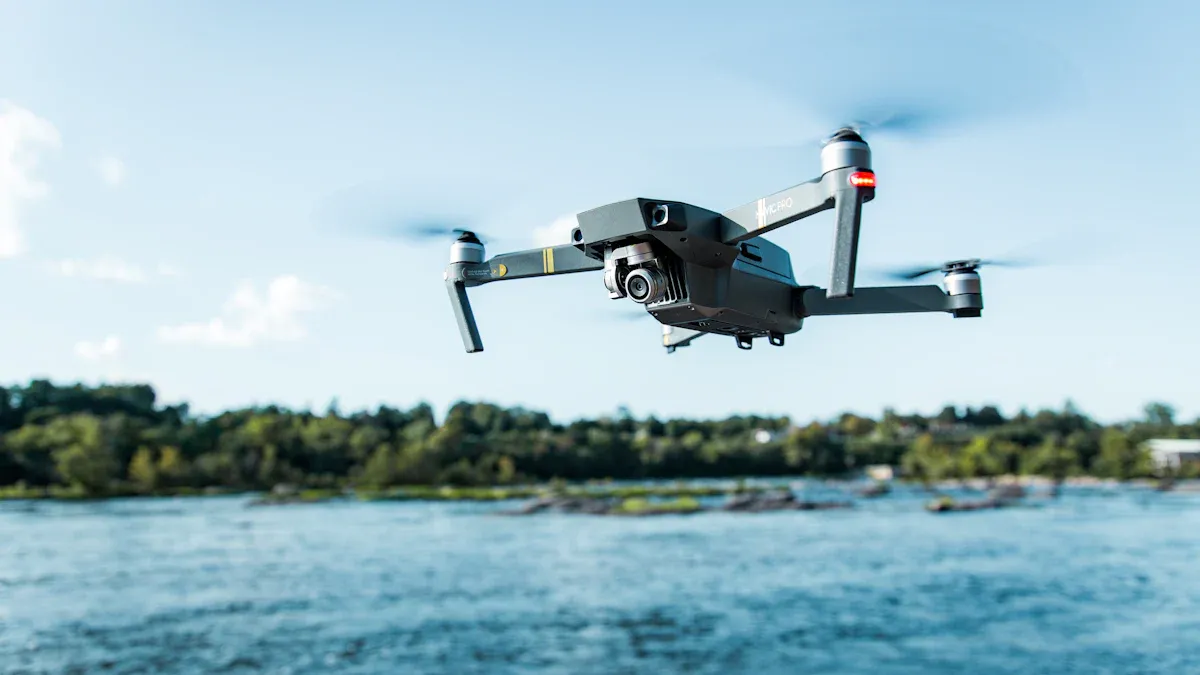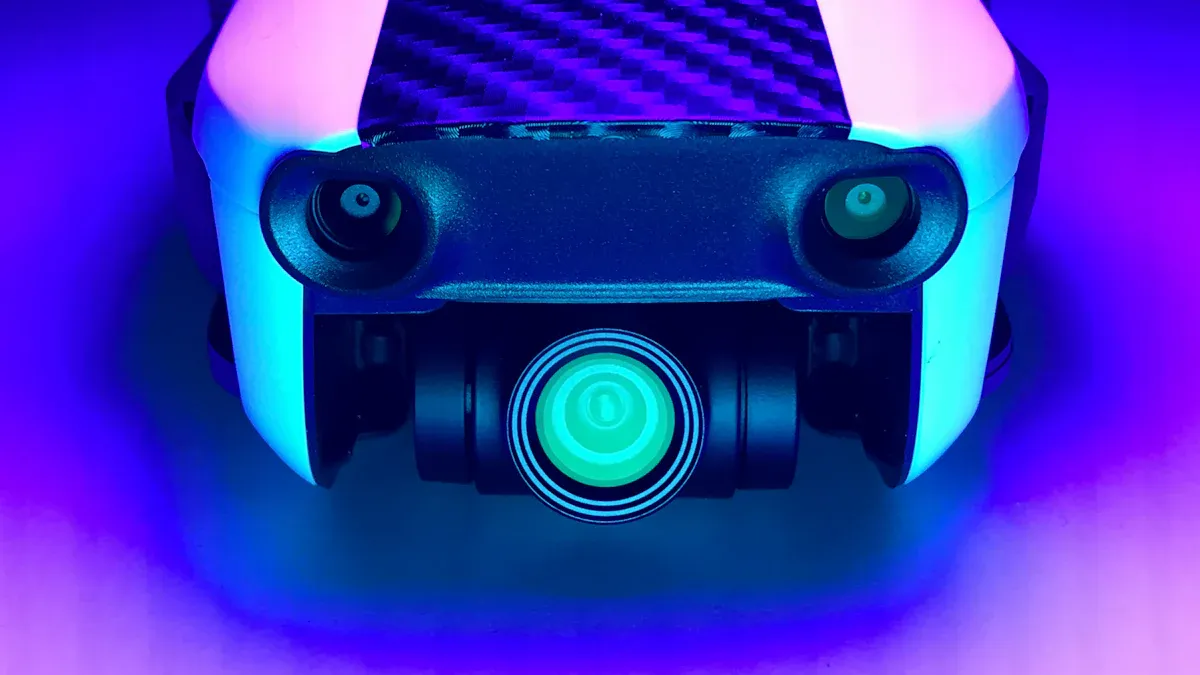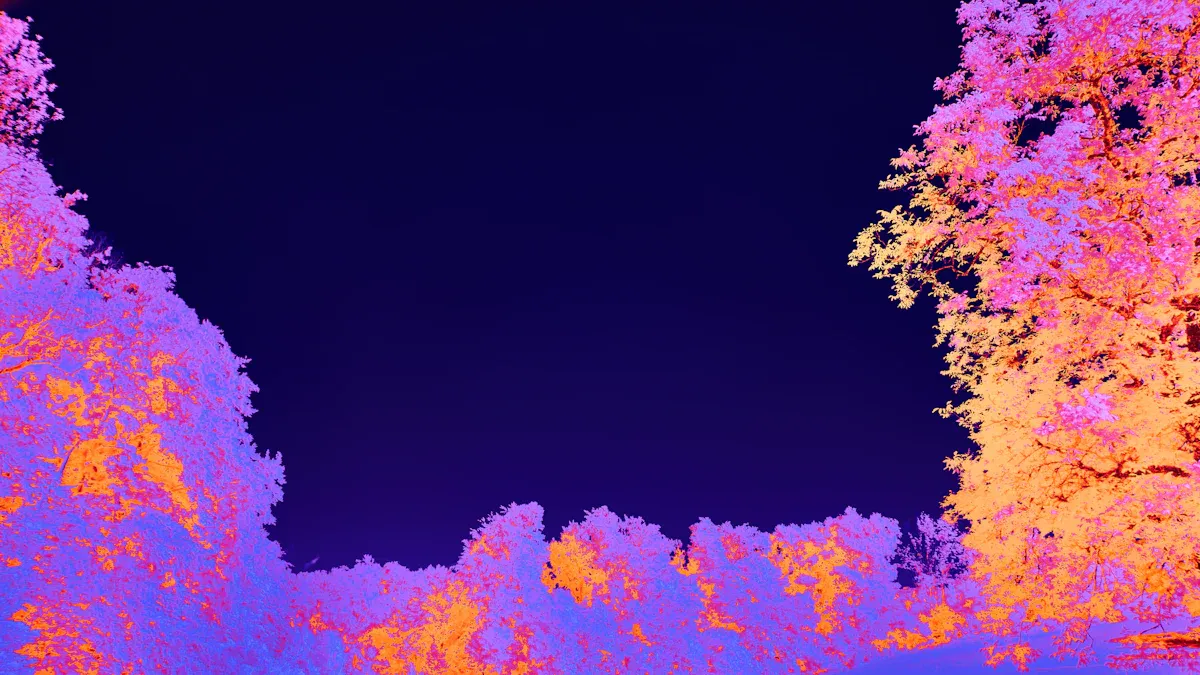Understanding How Infrared Drone Cameras Capture Heat

Infrared drone cameras are very important for finding heat. They take in infrared rays from objects and turn them into thermal pictures. This technology is growing fast. The infrared camera market might hit USD 2.24 billion by 2024, with a yearly growth rate of 16.7%. By 2034, the market could grow to USD 8.25 billion. With better thermal cameras, you can discover new options in many areas.
Key Takeaways
Infrared drone cameras see heat by finding infrared rays. They change these rays into thermal images that show temperature differences.
These cameras are important in many areas. They help in search and rescue, firefighting, and checking the environment. They make things safer and more efficient.
Important parts like infrared sensors, lenses, and image processors work together. They create clear thermal images for quick analysis.
New technology, like microbolometers, makes infrared cameras easier to use and better. This allows them to be used in more areas.
The infrared camera market is growing fast. Big investments are helping new ideas and expanding their use in farming and security.
The Science of Infrared Detection
Infrared detection is based on the idea that all things give off heat as infrared rays. This heat changes with the object's temperature. When you use an infrared drone camera, it picks up these rays and makes thermal pictures. Here are some important points about how this works:
All things give off infrared rays based on their heat levels.
The amount of infrared rays shows an object's temperature, helping you see heat patterns.
Thermal cameras change the movement of atoms, which create heat, into pictures. This technology is very important for many uses, like search and rescue. You can find warm bodies or heat sources in tough places.
To work better, infrared cameras use special materials. For example, quantum dot infrared detectors make them more sensitive and allow them to see different colors. Graphene and other 2D materials help them work well in many situations. These improvements let thermal cameras work well in different conditions.
Material Type | Contribution to Performance and Sensitivity |
|---|---|
Quantum Dot Infrared Photodetectors | Make cameras more sensitive, lower dark current, allow color detection |
Graphene and 2D Materials | Help with fast movement, adjustable electronic features, need less cooling for IR detection |
Colloidal Quantum Dots | Improve infrared absorption, work at higher temperatures than regular semiconductors |
Type-II Superlattices | Boost infrared absorption and temperature capabilities |
Knowing how thermal imaging works helps you see what infrared drone cameras can do. These tools give useful information in areas like environmental checks, building inspections, and wildlife studies.
Key Components of Infrared Drone Cameras

Infrared drone cameras have important parts that work together. These parts help capture thermal images. Knowing these parts helps you see how the cameras work well. Here are the main parts to understand:
Infrared Sensors: These sensors find infrared rays from objects. They change these rays into electrical signals. The camera uses these signals to make thermal images. Different sensors like VNIR, SWIR, MWIR, and LWIR have different heat detection abilities.
Optics: The optics in an infrared camera focus the infrared rays onto the sensor. Good lenses make sure the camera takes clear thermal images.
Image Processing Unit: This part processes signals from the infrared sensors. It improves the thermal images, changes colors, and makes them clearer. The processing unit is key for turning infrared rays into useful data.
Display Screen: The display screen lets you see thermal images right away. Some advanced models can even record images and have analysis tools.
Drone Platform: The drone is the base for the infrared camera. Different drones, like fixed-wing aircraft and helicopters, can carry these cameras. The type of drone affects how far the camera can see and what it can do.
Power Supply: Infrared cameras need a strong power source to work. Most drones use rechargeable batteries for long flights.
Here’s a quick overview of how these parts fit into infrared drone cameras:
Category | Details |
|---|---|
VNIR, SWIR, MWIR, LWIR | |
Platform Outlook | Fixed-wing aircraft, Helicopters, Drones |
Resolution Outlook | <1 MP, 1-5 MP, 5-15 MP, >15 MP |
Application Outlook | Surveillance, Environmental monitoring, Precision agriculture, Inspection |
Regional Outlook | North America, Europe, South America, Asia Pacific, Middle East and Africa |
By knowing these parts, you can see what thermal drone cameras can do. They give helpful information in many areas, like environmental checks and inspections.
How Infrared Drone Cameras Operate
Infrared drone cameras work by finding infrared rays from objects. These rays show the heat energy of those objects. When you use an infrared camera, it catches these rays and turns them into thermal pictures. Here’s how it happens:
Detection of Infrared Radiation: The camera's sensors look for infrared rays. Unlike regular cameras that see visible light, infrared cameras focus on heat. This helps you notice temperature changes right away.
Conversion to Thermal Images: The sensors change the detected infrared rays into electrical signals. These signals then create thermal images that you can understand. High-quality thermal cameras can even find tiny temperature differences, making them useful in many areas.
Real-Time Data Display: Drones with thermal cameras can show thermal data right away. This is helpful for things like search and rescue, building checks, and wildlife watching. You can see a full view, which makes it easier to operate.
Advancements in Technology: New thermal sensors, called microbolometers, have gotten much better. They don’t need complicated cooling systems, making infrared cameras easier to use and cheaper. This progress lets you use drone thermal imaging in many fields.
Understanding Heat Signatures: Thermal imaging is about looking at heat signatures from atomic movements. By knowing how thermal imaging works, you can better understand the thermal data from infrared cameras.
Applications of Infrared Cameras in Drones

Infrared cameras in drones have many cool uses. These cameras are found in different fields, making them important tools. Here are some main areas where infrared drone cameras make a difference:
Search and Rescue: Drones with thermal cameras can cover big areas fast. This speed is very important in emergencies, especially when it’s hard to see. You can find missing people or warm bodies in tough places.
Firefighting: Infrared cameras help firefighters plan and watch their work. They can spot hot spots that you can't see with your eyes. This helps keep firefighters safe and makes firefighting more effective.
Tower and Power Line Inspection: Thermal cameras can find heat problems in power lines. These problems might show issues that regular cameras miss. Regular checks help keep things safe and stop power outages.
Surveillance: Drones with infrared cameras are great for military spying. You can watch large areas quietly, making it easier to gather information and do reconnaissance.
The infrared camera market is growing fast. Key areas driving this growth include military, cars, and manufacturing. Investments in new products and technology are changing the future of these uses.
Infrared drone cameras are strong tools that use thermal imaging to see heat. These cameras have many uses, from safety to checking the environment. For example, they can find hot parts in industries like oil and gas. This helps keep workers safe and makes maintenance easier.
In farming, these cameras spot stressed crops and check plant health. This helps farmers use better methods. Also, infrared images are important for studying wildlife. They let researchers watch animals without bothering them. As you learn about digital infrared cameras, you will see how they help make the world safer and more efficient.
FAQ
What do infrared drone cameras do?
Infrared drone cameras find heat by capturing infrared rays. They turn these rays into thermal images. This helps you see temperature differences in different places.
How are infrared cameras different from regular cameras?
Infrared cameras look for heat, not visible light. They capture infrared rays, which show temperature changes that regular cameras can't see.
Can you use infrared drone cameras at night?
Yes! Infrared drone cameras work well in low light. They can find heat signatures even in total darkness, which is great for nighttime use.
Which industries use infrared drone technology?
Many industries use this technology, like farming, construction, firefighting, and surveillance. These cameras help make things safer and more efficient in many areas.
Are infrared drone cameras costly?
Prices can differ based on features. Basic models start at a few hundred dollars, while advanced ones can cost thousands. Think about your needs when picking a camera.